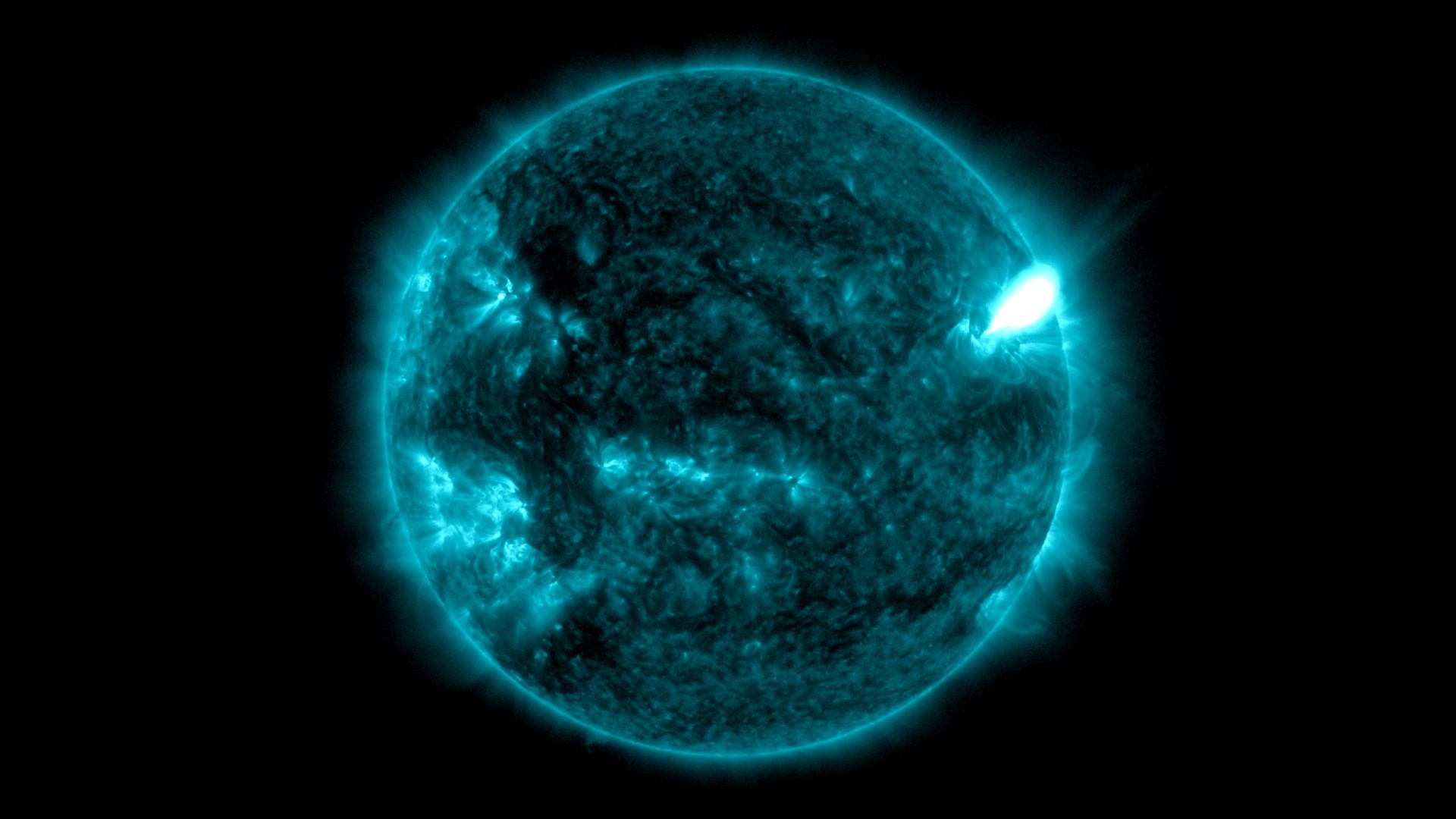Sun blasts out powerful X-class solar flare causing radio blackouts on Earth (video)
The solar flare erupted from a sunspot seven times the width of the Earth.
A giant sunspot exploded on Sunday, July 2, creating a powerful solar flare that lashed Earth's atmosphere and caused a radio blackout over parts of the U.S. and the pacific ocean.
The solar flare erupted from the sunspot AR3354 which is seven times the width of the Earth. The flare which blasted out of the sun at 15:14 EDT (1914 GMT), was seen as a bright ultraviolet flash by NASA's Solar Dynamic Observatory (SDO). It was classified as an X-flare, the strongest type of solar flare that exists.
Spaceweather.com reports that radiation from the flare ionized the top of Earth's atmosphere, resulting in a deep shortwave radio blackout over western parts of the U.S. and the Pacific Ocean that lasted around 30 minutes. Solar physicist Keith Strong shared stunning footage of the flare on Twitter, writing "X FLARE IN PROGRESS!!! Sunspot region AR3354 near the NW limb just produced an X1.07 Flare (between the 10th and 14th biggest flare so far, this solar cycle). That is the 18th X flare during SC25 [Solar cycle 25, the current solar cycle] (compared to just 14 from SC24)."
Related: Solar flares: What are they and how do they affect Earth?
Strong also pointed out on Twitter that June 2023 marked the highest monthly average for sunspot numbers in 21 years. In a separate tweet, the solar physicist wrotethat June 2023 marked the "HIGHEST MONTHLY AVERAGED SUNSPOT NUMBER SINCE SEPTEMBER 2002! The June 2023 SNN was 163.4 the highest value for over 20 years. The CM model is now forecasting a peak for SC25 of just under 200, the CM model at 125 (SC42 was 116). Any Grand Solar Minimum believers left out there?"
Solar flares are created when magnetic fields around sunspots become tangled, break, and then reconnect, a process called reconnection. This footage of this flare appears to show that it was helped along by a plume of plasma, causing magnetized material to land on sunspot AR3354.
Flares are grouped according to their strength, with the smallest flares called B-flares, which are followed by C-flares, then M-flares. The strongest class of solar flares are X-flares like that which was seen from AR3354 on Sunday.
Breaking space news, the latest updates on rocket launches, skywatching events and more!
Solar flare classes increase in strength by magnitude, much as the Richter scale ranks earthquakes. That means that an X-class flare is ten times the strength of a M-class flare, and is 1,000 more powerful than a B-class flare.
Long-lasting flares such as this one are sometimes accompanied by coronal mass ejections (CMEs), events in which magnetic fields lash out a huge amount of stellar material in the form of plasma shooting out from the sun.
Though Sunday's X-flare was long-lasting enough to trigger a CME, sun observatories have yet to see a significant ejection of plasma associated with either this flare or the sunspot AR3354.

Robert Lea is a science journalist in the U.K. whose articles have been published in Physics World, New Scientist, Astronomy Magazine, All About Space, Newsweek and ZME Science. He also writes about science communication for Elsevier and the European Journal of Physics. Rob holds a bachelor of science degree in physics and astronomy from the U.K.’s Open University. Follow him on Twitter @sciencef1rst.


